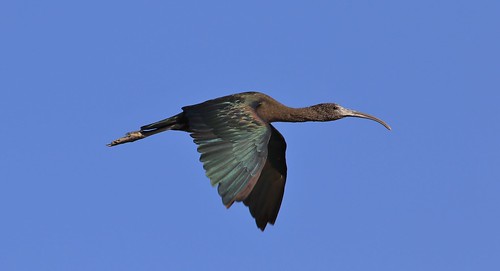Glossy Ibis
(Plegadis falcinellus)
Conservation • Description • Habitat • Ecology • Distribution • Taxonomy
Conservation Status |
|
|||||||
| IUCN Red List | LC - Least Concern |
|||||||
| NatureServe | N4B, N4N - Apparently Secure Breeding and Nonbreeding |
|||||||
| Minnesota | not listed |
|||||||
Description |
||
Glossy Ibis is a dark, medium-sized, long-legged, heron-like, wading bird. It nests in warm areas of Europe, Asia, Africa, and the Americas. In the United States it nests along the east coast from Maine south to Florida, and west along the Gulf Coast to eastern Louisiana. It is migratory and disperses widely after nesting. While its numbers are decreasing worldwide, its numbers and range are expanding in North America. It is a rare visitor to Minnesota during migration in the spring. It is found in shallow freshwater or saltwater wetlands with tall emergent vegetation, including marshy edges of lakes and rivers, swamps, wet meadows, sewage ponds, irrigated agricultural fields, and ditches. Adults are 19″ to 26″ (48 to 66 cm) in length and have a 31″ to 41″ (81 to 105 cm) wingspan. They are slightly smaller and thinner than White-faced Ibis. Adults and juveniles are entirely dark. The head, neck, and body are rich chestnut brown or maroon. The eyes are dark and there is a bare patch of skin in front of each eye. The bare skin is dark. There is a white feathered border around the face that extends under the chin and above and below each eye but does not wrap around behind the eye. The bill is brownish, long, slender, and curved downward. The wings are dark with metallic bluish-green tones. The legs are dull reddish-brown. Juveniles are similar but lack the bare skin patch in front of the eye and the white border around the face. |
||
Size |
||
Total Length: 19″ to 26″ (48 to 66 mm) Wingspan: 31″ to 41″ (81 to 105 mm) |
||
Voice |
||
Similar Species |
||
Habitat |
||
Marshes, swamps, wet meadows, sewage ponds, irrigated agricultural fields, and ditches. |
||
Ecology |
||
Migration |
||
|
||
Nesting |
||
It nests in trees, often with other wading birds, and often far from foraging sites. |
||
Food |
||
Insects, snails, mussels, crabs, crayfish, and occasionally fish, amphibians, lizards, snakes, and nesting birds. |
||
Distribution |
||||
Occurrence |
||||
Rare but increasing visitor in the spring |
||||
Maps |
||||
The Minnesota Ornithologists’ Union All Seasons Species Occurrence Map |
||||
Taxonomy |
|||
| Class | Aves (birds) | ||
Order |
Pelecaniformes (pelicans, herons, ibises, and allies) | ||
Family |
Threskiornithidae (ibises and spoonbills) |
||
Subfamily |
Threskiornithinae | ||
Genus |
Plegadis | ||
Subordinate Taxa |
|||
Glossy Ibis (Plegadis falcinellus falcinellus) Glossy Ibis (Plegadis falcinellus peregrinus) |
|||
Synonyms |
|||
|
|||
Visitor Photos |
|||||
Share your photo of this bird. |
|||||
| This button not working for you? Simply email us at info@MinnesotaSeasons.com. Attach one or more photos and, if you like, a caption. |
|||||
Mike Poeppe |
|||||
I found this one about a mile East of Hokah, MN about 5 pm today! Not what I expected to see! |
|||||
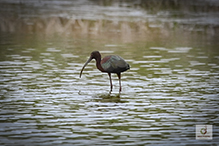 |
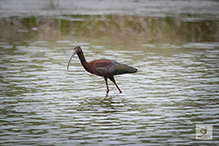 |
||||
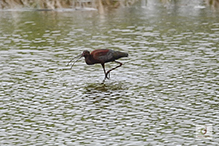 |
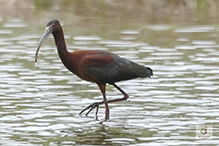 |
||||
MinnesotaSeasons.com Photos |
|||||
|
|||||

Visitor Videos |
|||
Share your video of this bird. |
|||
| This button not working for you? Simply email us at info@MinnesotaSeasons.com. Attach a video, a YouTube link, or a cloud storage link. |
|||
Other Videos |
|||
| Glossy Ibis (Plegadis falcinellus) in Omolio/Greece Valentin Potchekansky |
|||
About
Apr 15, 2020 |
|||
| Glossy Ibis (Plegadis falcinellus) Χαλκόκοτα. Some of the unusually many in the Achna dam 9/4/2023 George konstantinou - Cyprus Wildlife tours |
|||
About
Apr 10, 2023 |
|||
| The glossy ibis (Plegadis falcinellus) Explore Croatia |
|||
About
Premiered May 31, 2021 The glossy ibis (Plegadis falcinellus) |
|||


Created: 5/10/2023
Last Updated:


